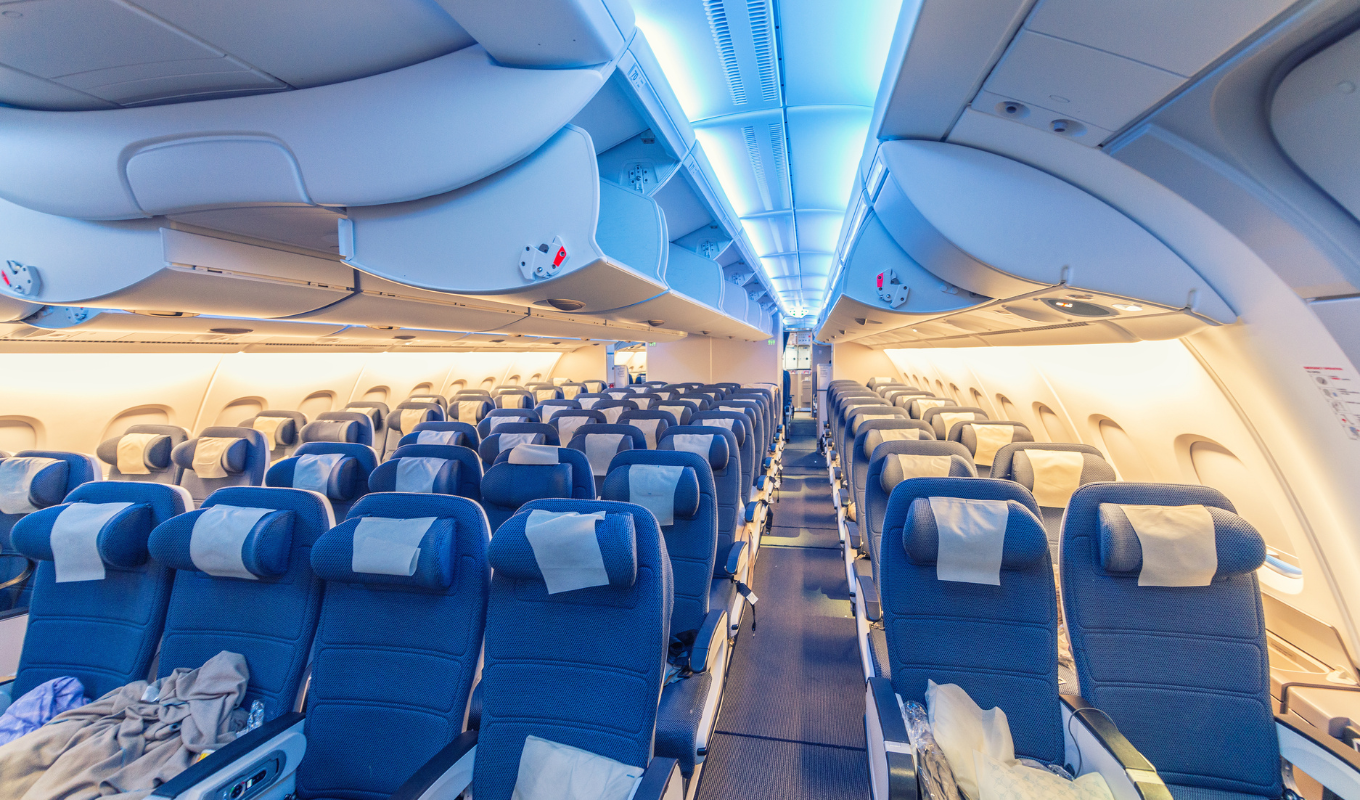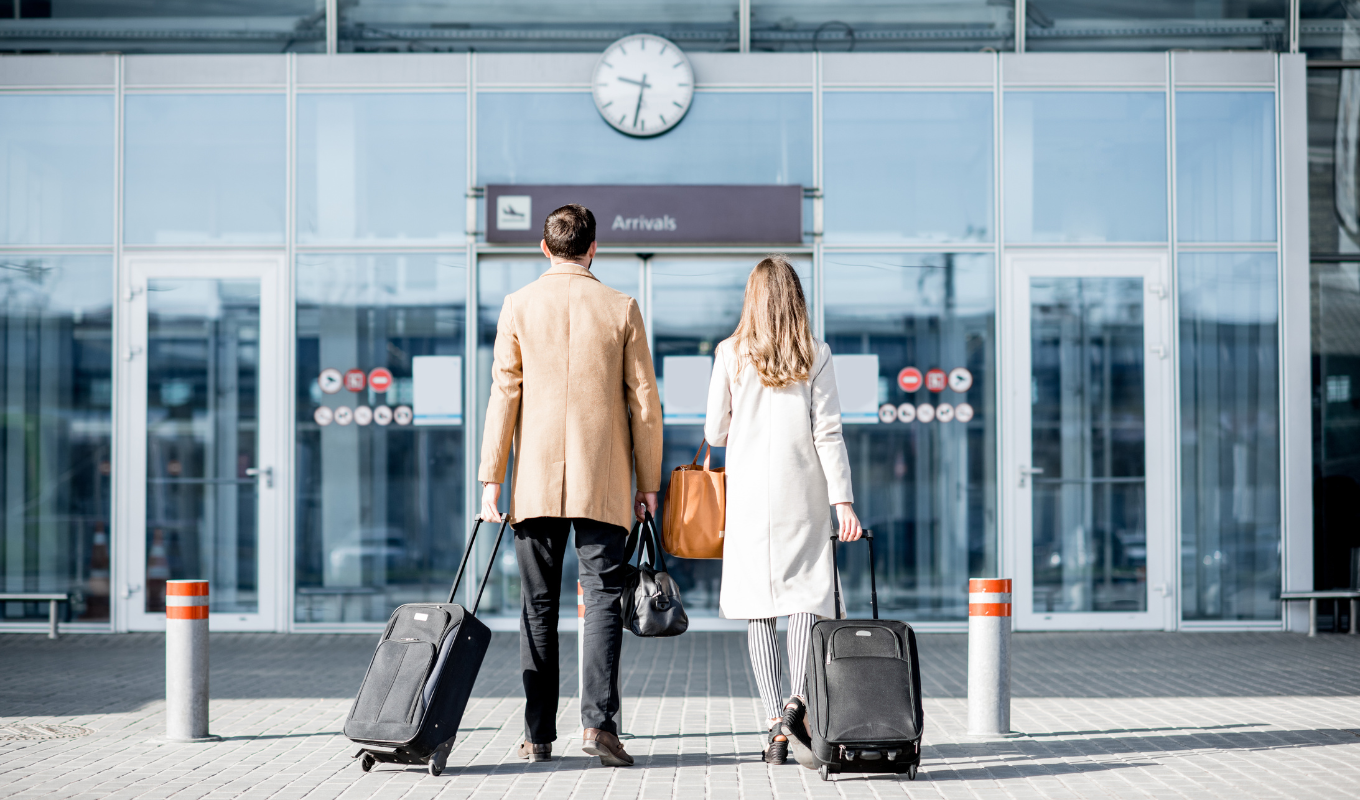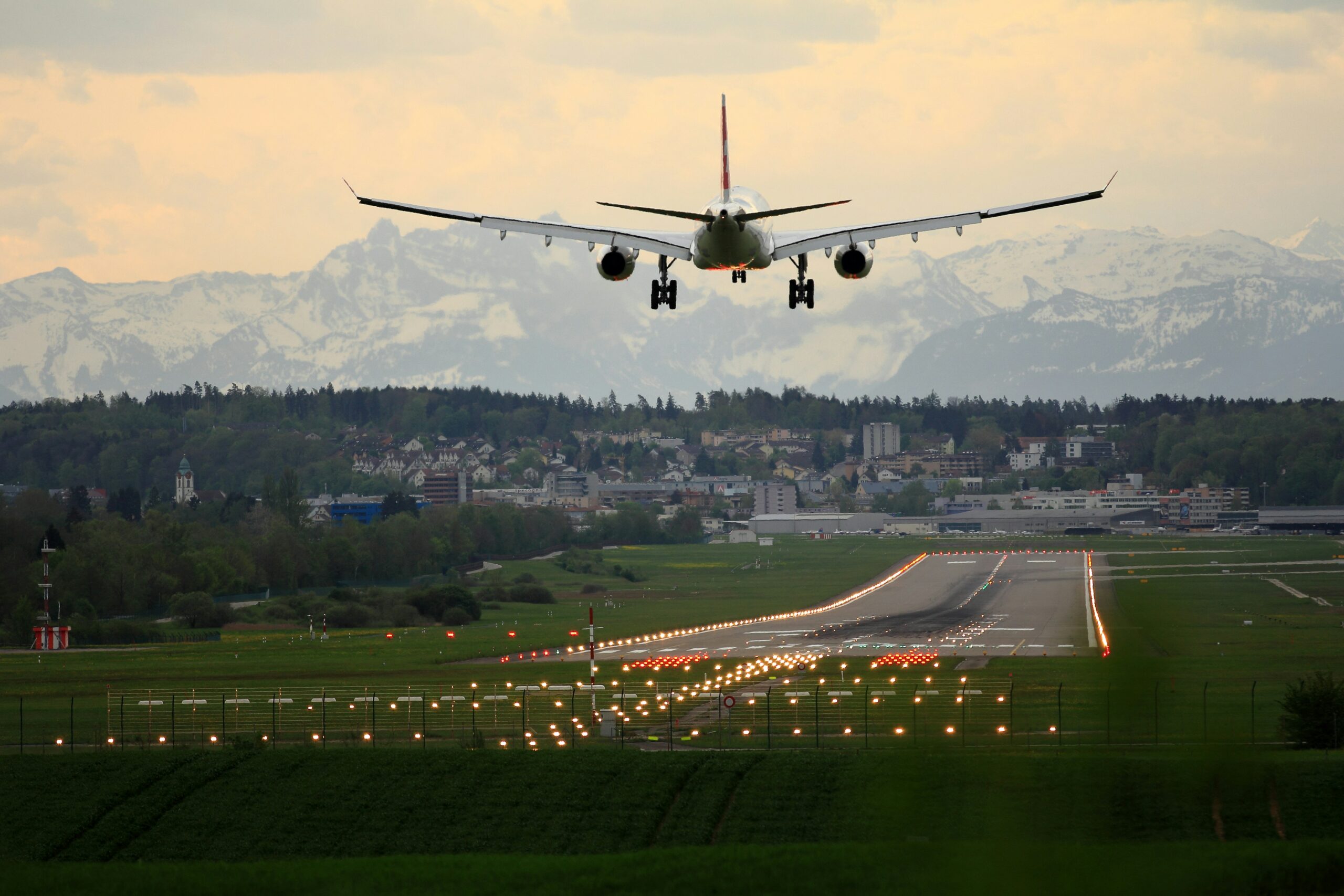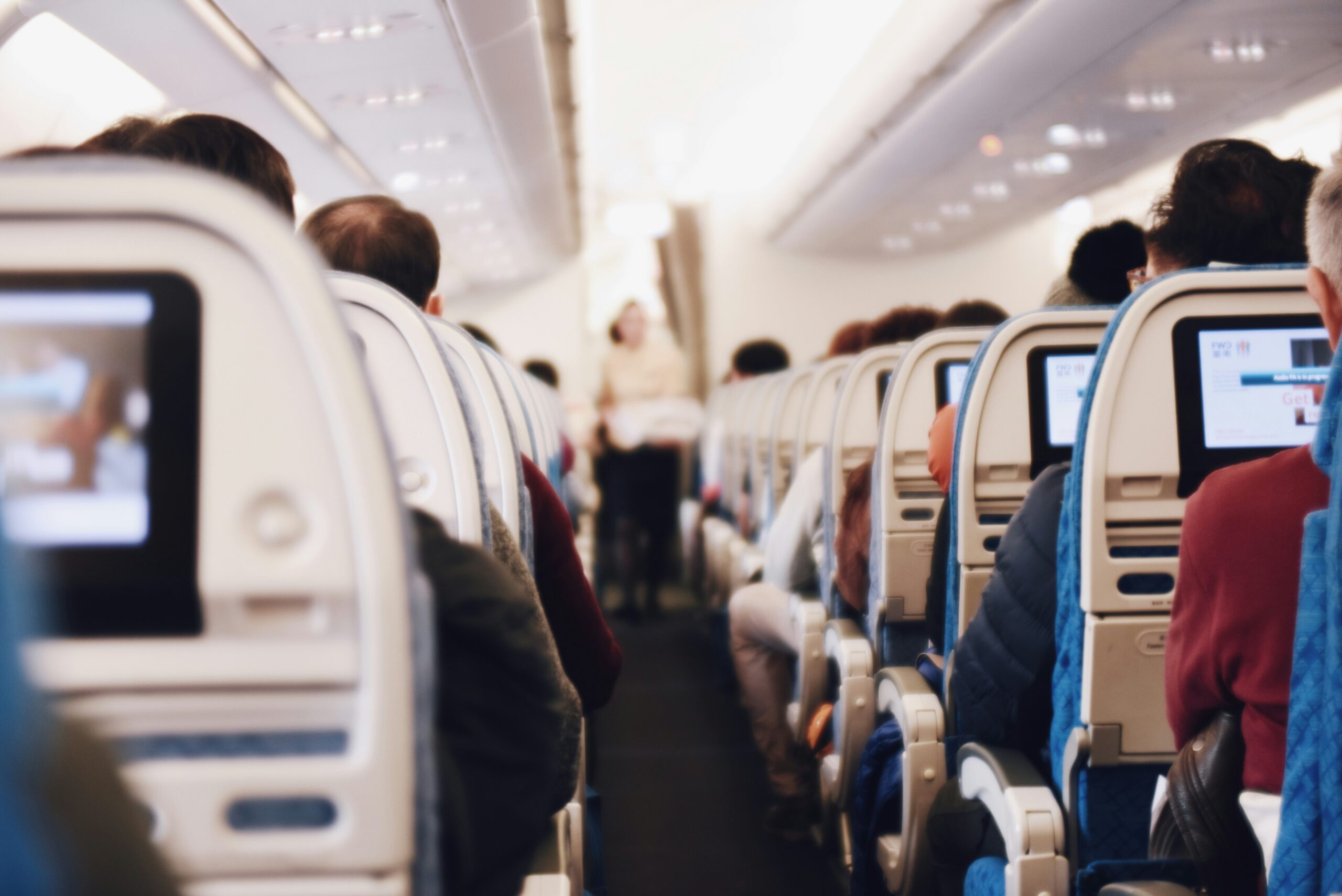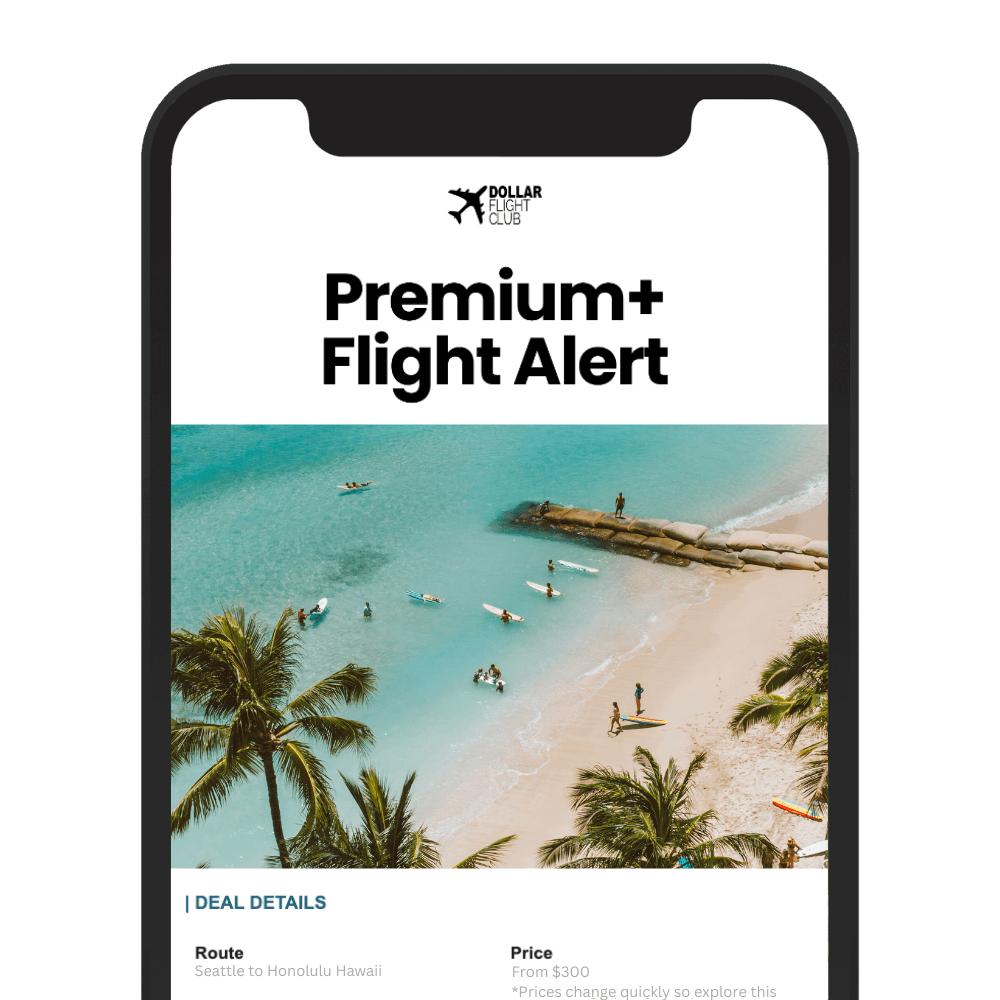When choosing between business and economy class, the decision usually boils down to cost versus comfort. Economy is budget-friendly and provides standard services, while business offers premium perks like spacious seating, gourmet meals, and priority services – but at a much higher price. Here’s what you need to know:
- Economy Class: Affordable, compact seats (16–19 inches wide, 30–34 inches pitch), basic meals, and limited baggage (44–55 lbs).
- Business Class: Expensive, spacious seats (up to 21 inches wide, lie-flat options), premium meals, lounge access, priority boarding, and higher baggage allowance (66–77 lbs).
Key Stats:
- Business class tickets typically cost 3–5 times more than economy.
- Upgrade deals: Alaska Airlines offers upgrades starting at $29; international upgrades can cost $350 + miles.
- For long-haul flights, business class is often worth it for comfort and rest.
Quick Comparison:
| Feature | Economy Class | Business Class |
|---|---|---|
| Seat Width | 16–19 inches | Up to 21 inches |
| Seat Pitch | 30–34 inches | Over 60 inches, lie-flat |
| Meals | Basic | Multi-course gourmet |
| Baggage Allowance | 44–55 lbs | 66–77 lbs |
| Lounge Access | Not included | Included |
| Cost | Base fare | 3–5 times higher |
For short flights, economy is often sufficient. For long-haul or special trips, business class may be worth the splurge. Use loyalty programs, bidding systems, or last-minute deals to save on upgrades.
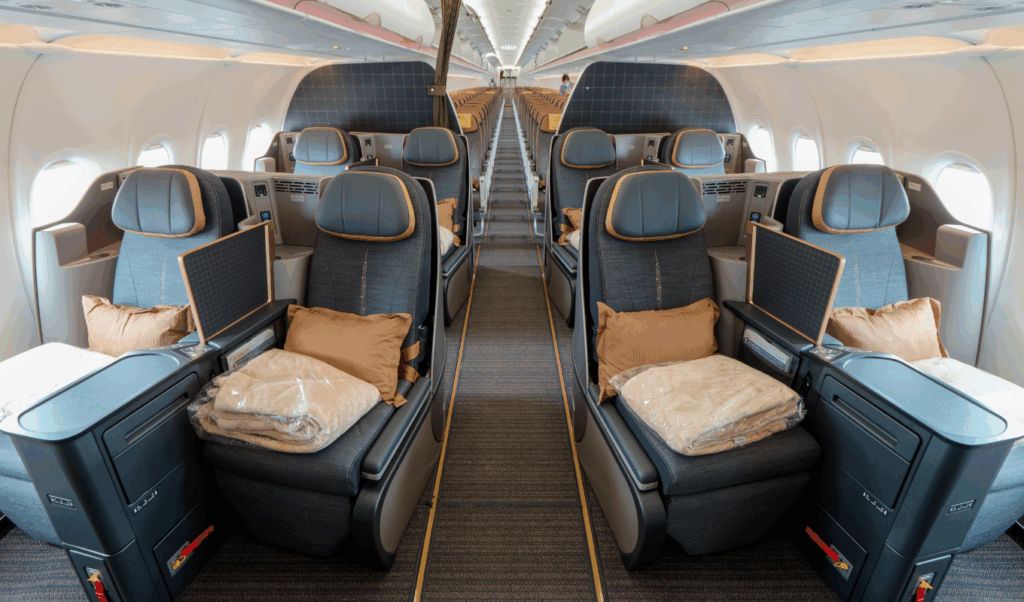
Main Differences Between Business and Economy Class
When it comes to air travel, the choice between business and economy class can significantly shape your experience – from check-in at the airport to the moment you land at your destination.
Seating, Comfort, and Space
Economy class seating is functional but compact, typically offering 16–19 inches in width and a pitch (legroom) of 30–34 inches. While sufficient for short flights, these dimensions can feel restrictive on longer journeys. On the other hand, business class seats are designed for comfort, with widths up to 21 inches, over 60 inches of pitch, and many featuring lie-flat options. This makes business class far more appealing for long-haul flights.
The layout also sets the two apart. Economy class seating is arranged in an open-plan configuration, often feeling crowded, while business class offers individual pods or suites that provide privacy and a more serene environment. Beyond seating, the differences extend to service and perks, both in the air and on the ground.
Services and Perks
Business class passengers enjoy a range of exclusive benefits even before boarding. These include priority check-in, first boarding privileges, and access to premium airport lounges. For travelers navigating busy airports, these perks can save time and reduce stress.
Onboard, the service disparity becomes even clearer. Business class offers gourmet meals, premium beverages, and advanced entertainment systems with larger screens and a broader selection of content. In contrast, economy class provides basic meal options and standard entertainment, which, while functional, lack the premium touch of business class.
| Feature | Economy Class | Business Class |
|---|---|---|
| Baggage Allowance | 44–55 lbs (20–25 kg) | 66–77 lbs (30–35 kg) |
| Check-in Process | Standard lines | Priority check-in |
| Boarding Priority | Last to board | First to board |
| Lounge Access | No access | Exclusive lounge access |
| In-flight Service | Minimal service | Dedicated attendants |
Another notable difference is baggage allowance. Economy class typically permits 44–55 lbs (20–25 kg), while business class passengers can check 66–77 lbs (30–35 kg) without incurring extra fees. This added allowance can be a lifesaver for travelers with heavier luggage. However, these perks come at a cost.
Price Differences and Typical Costs
The price gap between economy and business class is substantial. Business class fares are often three to five times higher, and for flights lasting over six hours, they can climb to 10 times the cost of economy tickets.
For example, on flights between Madrid and Athens, one-way economy fares range from $161 to $601, while business class fares span $368 to $928. On domestic U.S. flights, where the average economy fare in 2023 was $179.25, business class tickets frequently exceed $500–800 for similar distances.
Longer routes, like transatlantic flights, show even greater disparities. In 2023, the average one-way economy ticket cost $435.17, whereas business class fares on the same routes were significantly higher.
Pricing is heavily influenced by factors like demand, seasonality, and booking timing. For instance, peak travel periods and last-minute bookings can push prices up by as much as 40%. Additionally, fuel costs, which account for about 30% of airline expenses, play a role in fare adjustments.
Interestingly, there has been a slight shift in business class pricing. In 2023, business class tickets were, on average, 3% cheaper than in 2019. This decline reflects increased competition and evolving travel trends, offering some relief for those seeking a premium travel experience at a slightly lower cost.
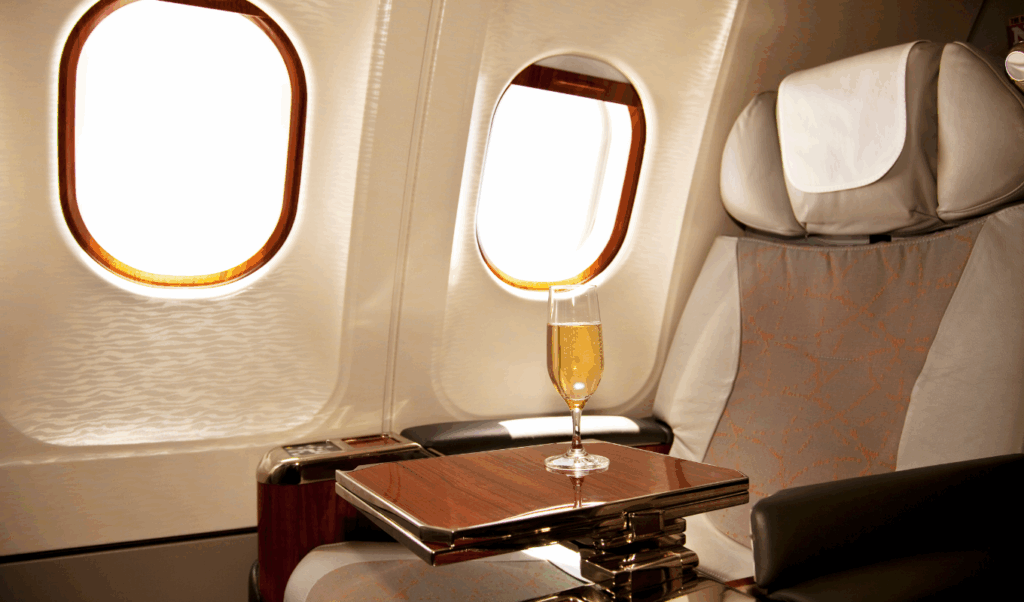
Cost Analysis: When Business Class Upgrades Are Worth It
Deciding whether to splurge on a business class upgrade often comes down to weighing the cost against the value it brings to your trip. The trick is figuring out when the added expense truly enhances your travel experience.
How to Get Upgrades and What They Cost
Frequent flyers with loyalty program memberships typically get the best upgrade deals. If you have elite status, you might score discounted upgrades. For instance, Alaska Airlines offers first-class upgrades starting at $29 and going up to $199, depending on the flight’s distance.
Another common method is bidding for upgrades. Many airlines now use bidding systems, with minimum bids usually set between $100 and $150. The final price depends on factors like demand and availability. For international flights, American Airlines charges a mix of cash and miles – upgrading to business class for a trip to Europe, for example, might cost $350 plus 25,000 AAdvantage miles.
If you’re flexible, last-minute upgrades can be a great way to save. When airlines adjust schedules and premium seats open up, they often offer discounted upgrades. Keep an eye on online portals or contact the airline close to your departure time to snag these deals.
Using miles for upgrades is another efficient option. It usually costs fewer miles to upgrade than to book a business class ticket outright. However, policies vary by airline. For example, while Delta allows SkyMiles upgrades on award tickets, American Airlines and United don’t permit upgrades on mileage bookings.
Now that you know how upgrades work, let’s explore how flight duration and travel purpose can influence whether the cost is worth it.
Flight Length and Travel Purpose Factors
The length of your flight plays a big role in deciding if a business class upgrade is worth it. For shorter domestic flights – those under three hours – the benefits of extra comfort are limited and often don’t justify the cost. On the other hand, longer flights, especially those over three hours, offer a stronger case for upgrading. The longer you’re in the air, the more you’ll appreciate the added comfort.
For long-haul and overnight flights, the value of upgraded seating becomes even clearer. A lie-flat seat or extra legroom can make a world of difference in arriving well-rested and ready to tackle your itinerary.
The purpose of your trip also matters. If you’re on a short international trip, upgrading can help maximize rest and productivity when time is tight. Business travelers may face specific company policies about upgrades, so it’s wise to check with your employer before making a decision. Using your personal miles for a business trip upgrade can often be simpler than navigating award flight bookings.
Special occasions like honeymoons, anniversaries, or milestone celebrations are another reason to consider upgrading. The added luxury can turn a trip into a memorable experience, making the cost feel more worthwhile. Whether it’s for work or play, your travel goals and priorities will help guide your decision.
Upgrade Rules and Limits
Understanding airline rules is key to making the most of your upgrade. For instance, basic economy tickets are almost always excluded from upgrade eligibility, so you’ll be stuck in your original seat. Plus, upgrade fees are typically non-refundable, meaning any changes to your travel plans could result in lost money.
Many airlines also require cash co-pays in addition to miles. For example, American Airlines charges cash for upgrades on discounted economy fares, while United waives co-pays only for certain fare classes (O, Y, or B). These extra fees can quickly add up, so it’s important to factor them into your overall budget.
Availability is another hurdle. Airlines tightly manage premium cabin inventory, especially on busy routes or during peak travel times. If you’re eyeing an upgrade, check availability beforehand to avoid disappointment.
To decide if an upgrade is worth it, consider a cost-per-hour approach. For example, a $1,000 upgrade on a 10-hour flight breaks down to $100 per hour. This kind of calculation can help you determine if the expense aligns with your travel budget and priorities.
Ultimately, never spend more than you’re comfortable with. Sometimes, that extra money might be better spent on other travel perks. Staying flexible with your plans can also open up chances for complimentary upgrades.
If you’re looking for more affordable business class options, services like Dollar Flight Club can help. These platforms notify you of premium cabin deals, making luxury travel more accessible without relying on costly, last-minute upgrades. With these strategies in mind, you’ll be better equipped to decide when a business class upgrade is truly worth it.
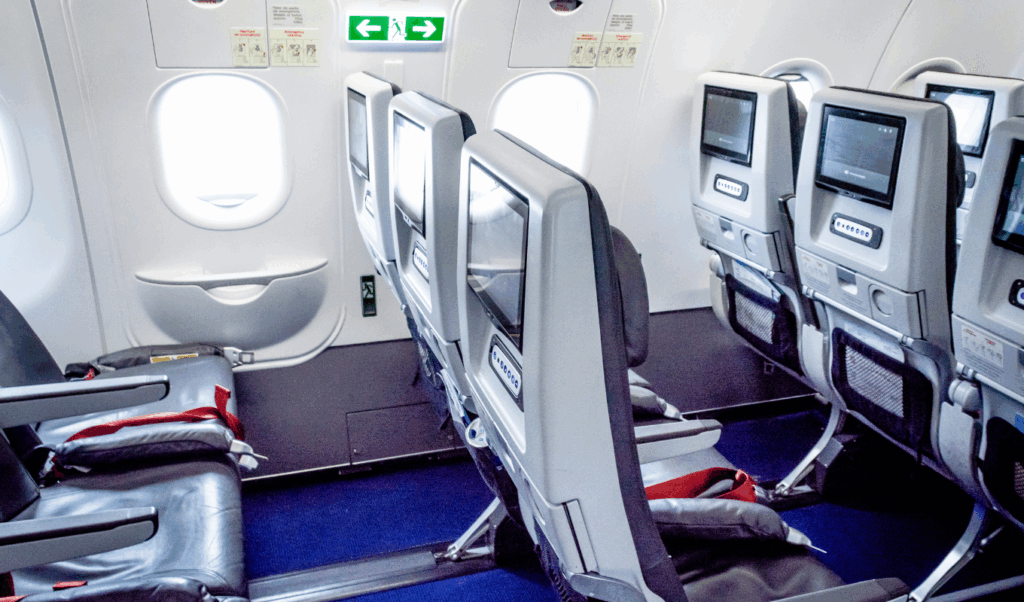
Business vs. Economy Class Feature Comparison
When deciding whether to upgrade from economy to business class, understanding the key differences can help you determine if the added expense aligns with your travel needs. This detailed feature comparison complements earlier cost discussions, spotlighting the tangible perks that come with a business class ticket. Over time, airlines have significantly improved their premium services, making business class a much more luxurious experience.
Feature Breakdown Table
The differences between economy and business class become crystal clear when you compare their features side by side. Here’s a breakdown of what each cabin offers:
| Feature | Economy Class | Business Class |
|---|---|---|
| Seat Width | 16–19 inches | Up to 21 inches |
| Seat Pitch | 29–34 inches | Over 60 inches (often with lie-flat options) |
| Reclining | Limited recline (2–4 inches) | Full recline; lie-flat beds are common |
| Privacy | Open seating | Individual pods or private suites |
| Meals | Standard meals, limited variety | Multi-course gourmet meals with fine drinks |
| Entertainment | Basic systems, limited selection | HD screens, premium content, noise-canceling headphones |
| Bedding | Blanket and a travel pillow | Two pillows, duvet, and memory-foam topper |
| Alcoholic Beverages | Limited to wine and beer | Complimentary premium liquor |
| Snacks | Basic snacks | Unlimited premium options |
| Baggage Allowance | 20–25 kg (44–55 lbs) | 30–35 kg (66–77 lbs) |
| Check-in | Standard | Priority |
| Boarding | Last | First |
| Lounge Access | Not included | Included |
| Cost | Base fare | 2–5 times higher than economy |
| In-flight Service | Minimal | Dedicated, personalized service |
The upgrades in business class go far beyond just extra legroom. Spacious seating, gourmet meals, and exclusive amenities like lounge access and priority boarding create a much more comfortable and enjoyable journey. These features can make a significant difference, particularly on long-haul flights, helping to reduce travel fatigue and improve overall well-being during your trip.
For travelers deciding between these two classes, the choice often comes down to factors like flight duration, the purpose of travel, and how much value you place on comfort and convenience. With these differences in mind, you can better evaluate whether a business class upgrade is worth it for your next trip.
How to Get Better Business Class Upgrade Deals
Scoring a business class upgrade without breaking the bank is all about timing, strategy, and knowing how airlines handle upgrades. By combining loyalty perks, deal alerts, and last-minute opportunities, you can enjoy premium travel for much less.
Loyalty Programs and Points
When it comes to upgrades, loyalty matters. Airlines prioritize their most frequent flyers, often offering complimentary upgrades or certificates for regional and systemwide use to elite members. If you’re part of an airline’s loyalty program and have elite status, your chances of snagging free or discounted upgrades increase significantly.
You can also use airline miles or credit card points to upgrade. Instead of paying cash, redeeming frequent flyer miles is a great way to get into business class. For example, with American Airlines, upgrading to business class for a trip to Europe might cost around $350 plus 25,000 AAdvantage miles. On domestic routes, upgrades are often valued at about $50 per hour of flight time, while international upgrades can climb to $100 per hour.
Different loyalty programs bring unique perks. American Airlines’ AAdvantage program offers excellent options for partner airlines and competitive award rates. United MileagePlus is ideal for long-haul upgrades, while Delta SkyMiles focuses on elite status benefits. Alaska Airlines’ Mileage Plan is especially appealing for travelers in the Pacific Northwest, offering first-class upgrades ranging from $29 to $199, depending on the flight distance.
Staying informed about loyalty benefits and timing your upgrades wisely can make a big difference.
Flight Deal Alerts and Notifications
Sometimes, finding discounted business class fares is all about staying ahead of the curve. Flight deal alert services track airline prices and notify you when premium seats go on sale, saving you the hassle of constant monitoring.
For instance, Dollar Flight Club sends email and SMS alerts for domestic and international business class deals. Their Premium+ plan, which costs $99 annually, includes exclusive flight deals, travel perks, and discounts from major travel brands. Airlines also tend to run sales during holidays like Black Friday and Boxing Day. Setting price alerts ensures you don’t miss out on these opportunities.
Remember, airline pricing algorithms can fluctuate wildly. Regularly checking upgrade prices and booking directly with the airline can often yield better results. Even if a flight deal alert service costs between $49 and $199 per year, the savings on just one discounted business class ticket can easily justify the expense.
Last-Minute Upgrade Options
If you’re flexible, last-minute upgrades at the airport can be a game-changer. Airlines sometimes offer discounted upgrades at check-in to manage seating or overbooked flights.
Arriving early and speaking directly with a counter or gate agent can pay off. In some cases, volunteering for a later flight might even land you a free upgrade. For example, a traveler once upgraded from economy to first class on a five-and-a-half-hour flight from Chicago to St. Lucia for just $269 per person.
The availability and pricing of last-minute upgrades depend on the airline and route. Alaska Airlines often offers last-minute one-way tickets at about 22.6% less than average fares, while Southwest Airlines provides around 8.2% savings. On the flip side, JetBlue may charge nearly 29.9% more for last-minute purchases.
Upgrade auctions and bidding systems are another option. These allow passengers to bid for premium seats, offering a chance to score an upgrade at a lower price. However, last-minute upgrades aren’t guaranteed. Combining these strategies with loyalty programs and deal alerts improves your odds of flying business class without paying full price.
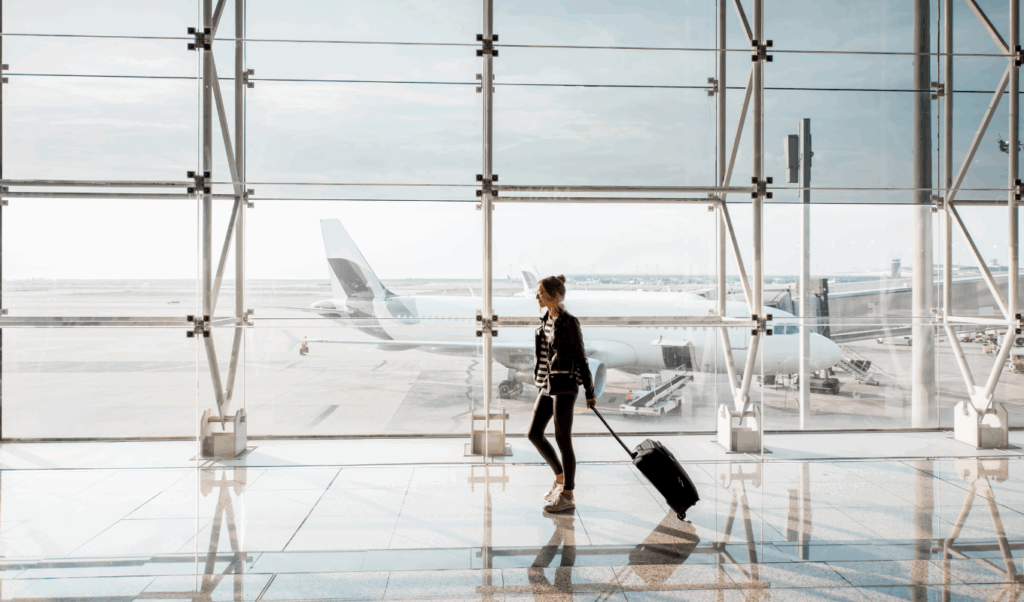
Final Thoughts: Choosing Between Business and Economy
Deciding between business and economy class boils down to a mix of budget, travel purpose, and your need for comfort. Each of these factors plays an important role, and the earlier breakdown of seating, service, and upgrade costs provides a solid foundation for making your choice.
For most travelers, budget is the key factor. Business class tickets often cost two to five times more than economy fares. If you’re watching your spending, try the cost-per-hour method: divide the upgrade price by the number of flight hours to see if the added comfort and perks are worth it.
Long-haul flights, especially overnight ones, can make business class feel more worthwhile. The ability to stretch out or lie flat can help you arrive feeling rested and ready for whatever’s on your agenda.
Comfort is another big consideration. Business class offers wider seats, extra legroom, and often lie-flat options, while economy provides standard seating with less space. If you’re taller, have health concerns, or simply value more room, the upgrade might feel less like a luxury and more like a necessity.
When looking at the overall value, it’s not just about the upgrade fee – it’s about the whole premium travel experience. Business class perks often include priority boarding, lounge access, gourmet meals, and extra baggage allowances. Comparing the cost of these extras to the upgrade fee can help you decide if the benefits outweigh the expense.
There are also ways to make business class more attainable. Loyalty programs, redeeming points, and keeping an eye on flight deal alerts through services like Dollar Flight Club can help. Additionally, last-minute upgrades or bidding systems might let you enjoy premium travel without breaking the bank.
At the end of the day, stick to what fits your budget and priorities. Spend within your means and only spring for the upgrade if the benefits truly align with your travel needs. The best choice is the one that balances your finances, comfort, and overall travel goals.
FAQs
How can I find affordable upgrades to business class?
Finding ways to upgrade to business class without spending a fortune is possible with a few clever tactics. One of the best starting points is joining frequent flyer programs. These programs allow you to use the miles or points you’ve earned to lower the cost of an upgrade. If you manage to achieve elite status with an airline, you may even score complimentary upgrades or get first dibs on discounted upgrade offers.
Another option is to watch for last-minute upgrade deals. Airlines often present these opportunities during check-in or via notifications, giving you a chance to snag a better seat at a reduced price. Some airlines also hold upgrade auctions, letting you bid for a business class seat – sometimes at a fraction of the regular cost. By staying flexible and keeping an eye out for these offers, you can enjoy the comforts of business class without overspending.
How can the cost-per-hour method help decide if upgrading to business class is worth it?
The cost-per-hour method offers a straightforward way to decide if upgrading to business class is worth the extra expense. Simply take the upgrade cost and divide it by the flight’s duration in hours. For example, if upgrading costs $1,000 for a 10-hour flight, you’re looking at $100 per hour.
This approach lets you compare the price with the perks that come with business class – like extra comfort, better amenities, and an elevated travel experience. It’s particularly helpful for long-haul flights, where the added space and premium service can significantly enhance your journey.
When is it worth upgrading to business class?
Upgrading to business class can be a smart move, especially in certain situations. For instance, special sales or promotions often feature discounted upgrade options that are hard to pass up. Another great opportunity? Keep an eye out for last-minute upgrade deals – these are sometimes available at the gate or during check-in and can save you a good chunk of money.
If you’re part of a frequent flyer or loyalty program, you might even score complimentary or discounted upgrades based on your membership perks. To boost your chances of snagging a better seat, consider booking your flight early and showing up at the airport ahead of time. A little preparation can go a long way!

